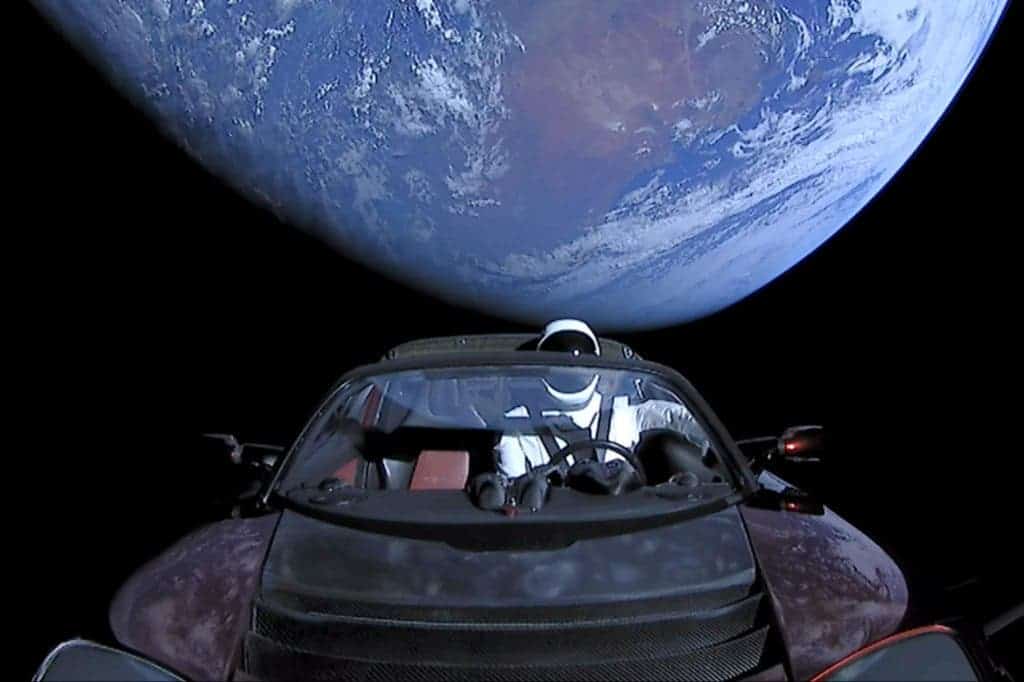
In early 2018, SpaceX tested its new Falcon Heavy rocket by launching a very unconventional cargo in space. Elon Musk, eccentric billionaire and SpaceX founder, wanted the payload to consist of a Tesla Roadster, with a mannequin called “Starman” dressed in an astronaut suit sitting in the driver’s seat.
After the initial hype of the publicity stunt wore off, Starman faded into obscurity. But this begs the question: What’s going on with that wacky space Tesla?
Well, it’s still in one piece, that’s for sure. Although the last time the Tesla Roadster was directly observed was in March 2018 (telescope directors aren’t too keen to award valuable observation time to a billionaire’s space junk), the object is still being tracked by NASA just as it does with thousands of car-sized asteroids.
According to the whereisroadster.com website, the Tesla is currently 234,483,948 miles (377,381,556 km) from Earth, moving away from us at a speed of 3,460 mi/h (5,568 km/h). However, overall, the car has traveled over 2 billion miles (3.2 billion km) during all of these years on an oblong orbit around the sun, whose edges intersect with Earth’s and Mars’s orbits.
So far, it has completed 2.6 loops around the Sun, making it the car with the largest mileage in history, by far. The vehicle has exceeded its 36,000-mile warranty almost 55,000 times while driving around the Sun.

During its closest approach to Mars, Starman and his Roadster passed within 5 million miles (8 million km) of the red planet, or about 20 times the distance between Earth and the Moon. It won’t brush against Mars again until 2035 and it won’t pass within a few million miles of Earth until 2047. By the time the car will return to our planet’s vicinity, Tesla might not even exist anymore, nor Musk for that matter. Just as well, Tesla might become the most valuable company in the world and Musk could be sipping a martini in his new Martian colony.
In any event, the roaming space Tesla could travel for millions of years from now on. In a 2018 study, scientists at the University of Toronto Scarborough found that the probability of the vehicle colliding with Earth or Venus in the next million years was just 6% and 2.5%, respectively. The risk of colliding with Earth within the next 15 million years is about 22%. That’s a pretty low risk, which means the Tesla could be still orbiting the Sun even after humans, in all likelihood, could cease to exist.


